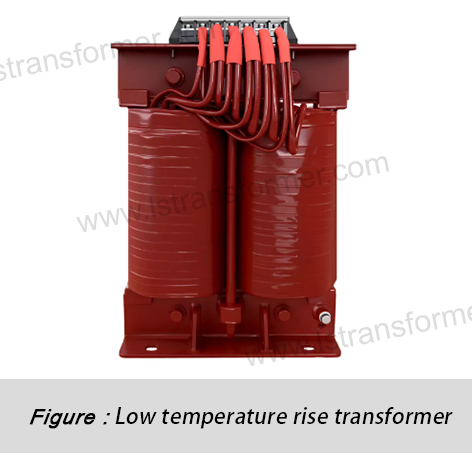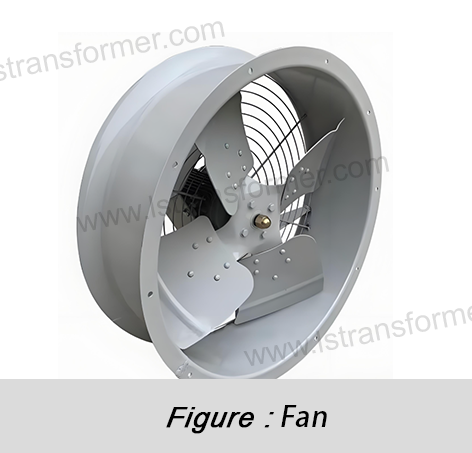Can Excessive Temperature Rise Melt Transformer Insulation Materials? — A Complete Guide to Temperature Rise Parameters
Can Excessive Temperature Rise Melt Transformer Insulation Materials?
— A Complete Guide to Temperature Rise Parameters
As a critical parameter in transformer operation, temperature rise directly impacts the safe operation and service life of the equipment. This article provides a comprehensive analysis of the core concepts, influencing factors, international standards, and optimization measures related to transformer temperature rise. It aims to help you deeply understand this key parameter and avoid severe accidents such as insulation material melting caused by excessive temperature rise.
Content
1. Basic Concepts and Importance of Transformer Temperature Rise
Transformer temperature rise refers to the difference between the internal temperature of a transformer under rated load (once thermal stability is achieved) and the ambient temperature. This parameter is crucial because it directly determines the aging rate of insulation materials and the transformer's lifespan.
When the temperature rise exceeds design limits, the aging rate of insulation materials doubles for every 8-10°C increase. This phenomenon is governed by the Arrhenius reaction rate theory, expressed by the formula:
Aging Rate = A × e^(-Ea/RT)
Where:
• A: Pre-exponential factor
• Ea: Activation energy (J/mol)
• R: Ideal gas constant (8.314 J/mol·K)
• T: Absolute temperature (K)
Insulation Class | IEC Standard Max Allowable Rise | IEEE Standard Max Allowable Rise | Hotspot Temp Limit |
A | 60°C | 65°C | 105°C |
E | 75°C | 80°C | 120°C |
B | 80°C | 90°C | 130°C |
F | 100°C | 115°C | 155°C |
H | 125°C | 140°C | 180°C |
Table 1: Temperature Rise Class Data
2. Main Causes of Excessive Temperature Rise
● Overloading Beyond Design Capacity
According to Ohm's Law (I=V/R), current passing through a conductor generates heat, following Joule's Law (Q=I²Rt). When a transformer is overloaded beyond its rated capacity, heat generation from winding resistance increases quadratically. For example, a load increase from 100% to 120% raises heat output by 44%. This overload leads to heat accumulation exceeding cooling capacity, causing temperature rise to surpass design limits rapidly.
● Reduced Cooling System Efficiency
Transformer cooling efficiency follows Newton's Law of Cooling:
q = hAΔT
where:
-q: Heat dissipation rate
-h: Heat transfer coefficient
-A: Heat dissipation area
-ΔT: Temperature difference
Blocked radiators, poor oil circulation, or fan failures significantly reduce h. Data shows that a 1mm dust layer on radiators can decrease cooling efficiency by 20-30%.
● High Ambient Temperature
Per IEC 60076-7, transformer rated capacity is based on ambient temperatures ≤40°C. Poor ventilation or high ambient temperatures reduce ΔT, weakening heat dissipation. For instance, a rise from 30°C to 45°C may increase winding temperature rise by 15-20°C under the same load.
● Insulation Material Degradation
The thermal conductivity (λ) of insulation materials decreases with aging. For example, fresh oil-paper insulation has λ ≈ 0.15-0.18 W/(m·K), but severe aging can reduce it below 0.10 W/(m·K). This degradation creates localized hotspots, triggering a vicious cycle: higher temperature → accelerated aging → further reduced thermal conductivity → even higher temperature.
3. Consequences and Risk Assessment of Excessive Temperature Rise
● Insulation Material Melting Mechanism
When temperatures exceed the glass transition temperature (Tg) of insulation materials, polymer chains lose mechanical strength. For example, Nomex paper (Tg ≈ 220°C) rapidly loses tensile strength beyond this point. IEEE reports that ~38% of transformer failures are directly linked to thermal aging.
● Increased Dielectric Loss
The dielectric loss factor (tanδ) of insulation materials grows exponentially with temperature: tanδ = tanδ0 × e^(αT), where α is a material constant. Higher tanδ converts more electrical energy into heat, creating a feedback loop. Data shows tanδ for Class A insulation at 105°C is 3-5 times higher than at 70°C.
● Gas Generation and Oil Degradation
Per Duval Triangle Analysis, when hotspot temperatures exceed 300°C, insulating oil decomposes, producing fault gases like C2H2. Every 10°C rise doubles oxidation rates, increasing acid value (KOH) by 0.03-0.05 mg/g and shortening oil-paper insulation lifespan.
Temp Rise Above Rated | Lifespan Reduction | Failure Risk Multiplier |
5°C | 15-20% | 1.5x |
10°C | 40-50% | 2.8x |
15°C | 70-80% | 5.2x |
20°C | 90-95% | 9.6x |
Table 2: Impact of Temperature Rise on Transformer Lifespan
In Summary
Effective temperature rise management requires a holistic approach covering design, operation, and maintenance. Key recommendations include:
• Regular infrared inspections and oil analysis.
• Maintaining clean and efficient cooling systems.
• Building a temperature rise monitoring database for trend alerts.
• Proactive temperature rise management significantly extends equipment life and reduces failure risks. For tailored solutions, our technical team offers expert support.
Contact Us
LuShan, est.1975, is a Chinese professional manufacturer specializing in power transformers and reactors for 50+ years. Leading products aresingle-phase transformer, three-phase isolation transformers,electrical transformer,distribution transformer, step down and step up transformer, low voltage transformer, high voltage transformer, control transformer, toroidal transformer, R-core transformer;DC inductors, AC reactors, filtering reactor, line and load reactor, chokes, filtering reactor, and intermediate,high-frequency products.
Our power transformers and reactors are widely used in 10 application areas: rapid transit, construction machinery, renewable energy, intelligent manufacturing, medical equipment, coal mine explosion prevention , excitation system, vacuum sintering(furnace), central air conditioning.
Know more about power transformer and reactor:www.lstransformer.com.
If you would like to obtain customized solutions for transformers or reactors, please contact us.
WhatsApp:+86 17267488565
Email:marketing@hnlsdz.com

 EN
EN
 FR
FR DE
DE ES
ES


